As the 2020s approached, the Hornady Ballistic Development Group, or BDG, was tasked with getting the most out of the AR-15 platform in terms of long-range viability. The cartridge the company produced to do this became the 6mm Advanced Rifle Cartridge, or 6mm ARC.
The 6mm ARC has a much flatter trajectory than a 7.62 NATO/.308 Winchester and fits in a lighter and shorter package than the AR-10. Additionally, converting an AR-15 to a 6mm ARC requires only three additional parts.
The 6mm ARC has also become very popular on the civilian side of things. While purpose-built for the AR platform, the 6mm ARC shines when hand-loaded for a bolt-action rifle, making it an excellent hunting cartridge option.
GOOD GEAR – Keep Your BRCC Brew Hot With the Stanley BRCC Vintage Logo Packable Mug
Brief History of the 6mm ARC
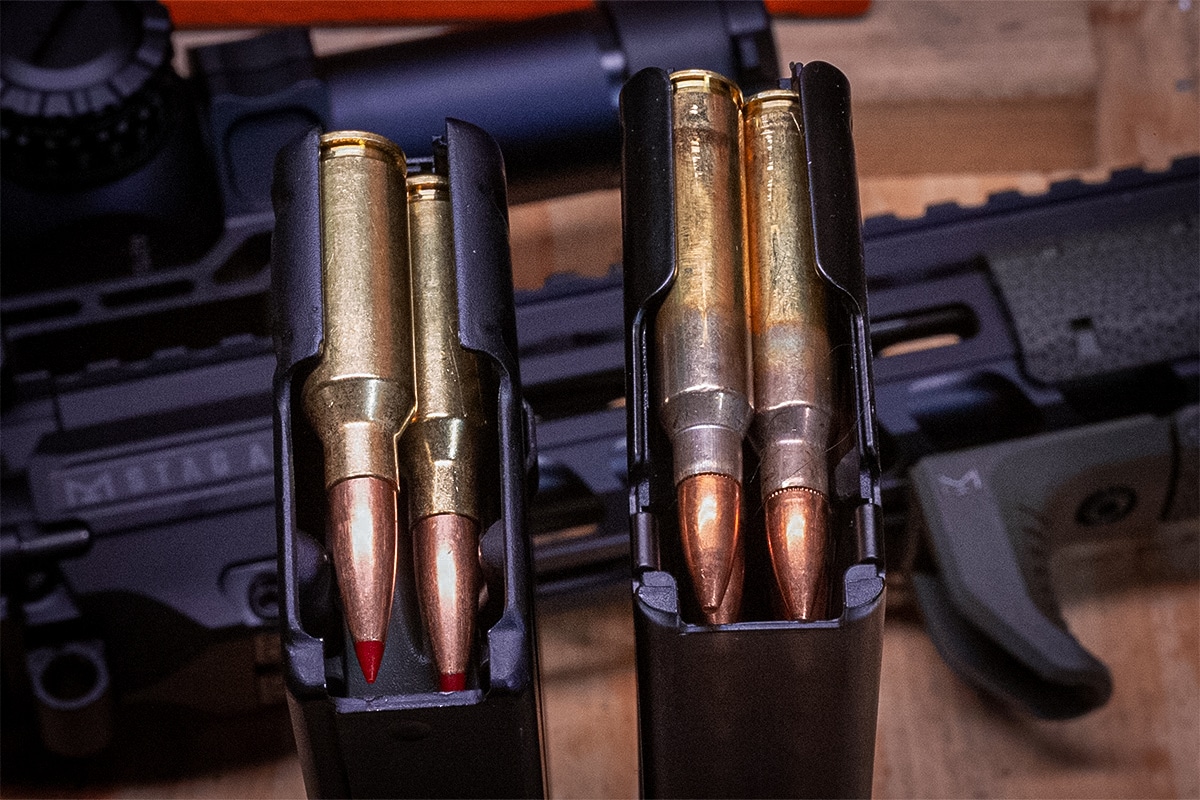
Hornady introduced the 6mm ARC to the public in early 2020. Designed to fulfill a Department of Defense (DOD) need, the goal was to replace the 5.56 NATO’s role as a dedicated marksman round. While there is currently no knowledge of which US Special Operations units have been issued rifles in the ARC, it is in use.
In late 2019, Barrett, the maker of the famous M107A1 .50 caliber sniper rifle, was contracted to supply the DOD with REC7 rifles chambered in the 6mm ARC. The REC7 rifle features a lengthened direct impingement gas system to ensure suppressed and unsuppressed reliability. To top it all off, Barrett uses 18-inch Proof Research barrels in match-grade stainless-steel and carbon-fiber configurations. Barrett teamed up with Hornady to make this possible.
Currently, the 6mm ARC has increased in popularity on the civilian side of things. Companies including Stag Arms, Wilson Combat, Savage Arms, and Howa, among others, have released rifles chambered in the new cartridge.
RELATED – Vudoo Gun Works Introduces Its First Pistol: A High-end 1911
6mm ARC Cartridge Specs
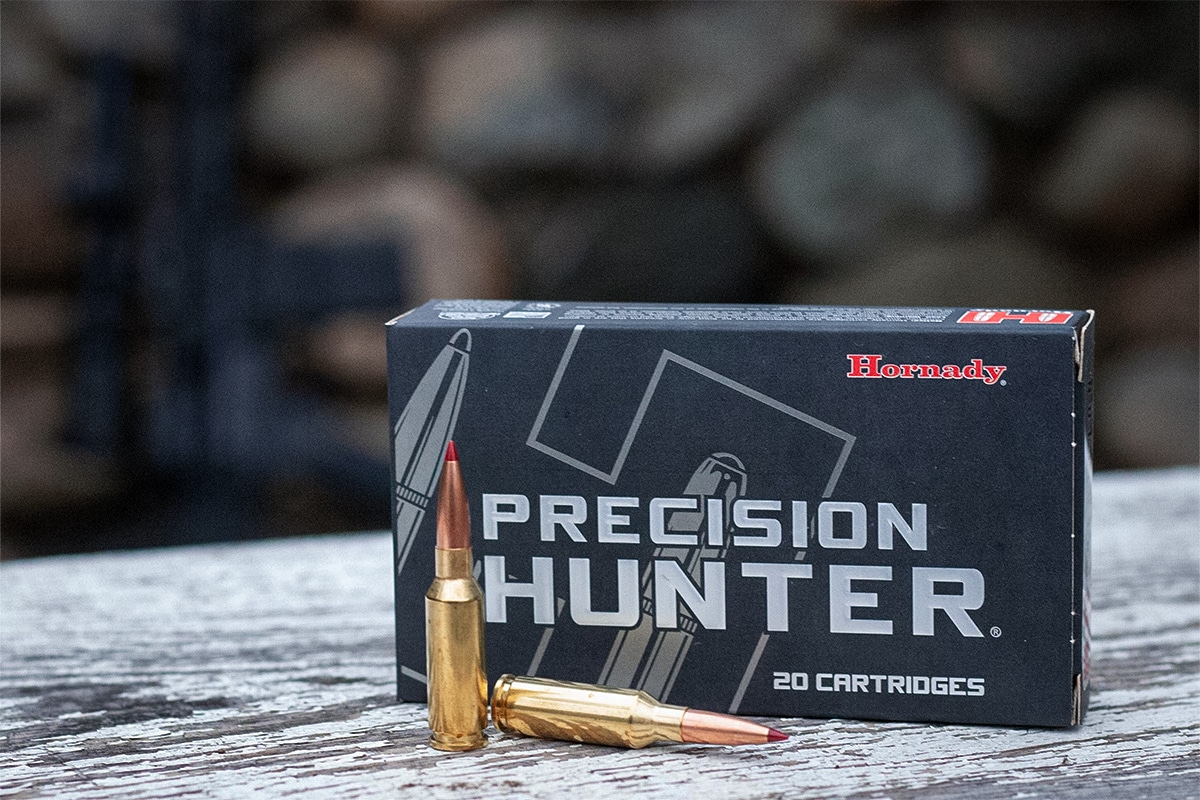
The 6mm ARC is a 6.5 Grendel necked down to a 6mm or .243 diameter bullet. The term “neck” refers to either expanding or contracting the mouth of the cartridge case to accept larger or smaller diameter bullets — something wildcat reloaders have been doing since the invention of the brass cartridge casing.
It’s rare for a new cartridge to be completely different dimensionally than anything else on the market, and the 6mm ARC is no exception. Using an existing parent casing and necking it up or down has created some of the most influential cartridges in the history of cartridge development. The .270 Winchester, .25-06, and .35 Whelen are all great examples of the .30-06 Springfield casing going through this process.
The 6mm ARC is designed to fire long, heavy-for-class, 110-grain bullets. These bullets have high ballistic coefficients, which makes them more stable in flight and therefore ideal for long-range shooting. Hornady recommends a 1:7.5” twist rate for your rifling to stabilize these bullets. But the 6mm ARC isn’t limited to those heavy-for-class bullets; it can be loaded with bullets as light as 58 grains.
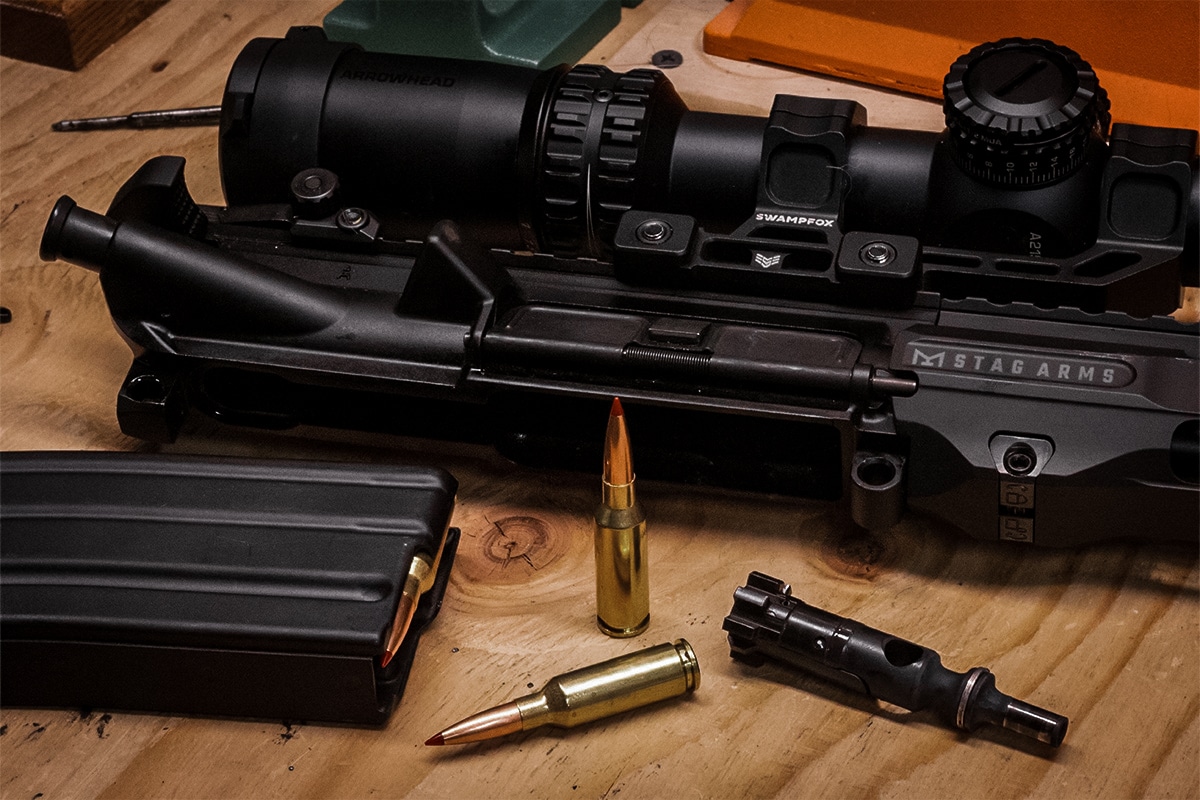
The base diameter is 0.441 inches, which makes the cartridge a little fatter overall than a .223/.556 cartridge. Despite this size difference, a 30-round 5.56 mag will hold 25 rounds of 6mm ARC with the appropriate follower installed.
“What we are trying to do here is to take that cartridge and look at everything that is part of it,” said Steve Hornady, the president of Hornady Manufacturing, about the 6mm ARC. “It’s not just the cartridge; it’s the platform, it’s the chamber, it’s the barrel, it’s the gun that it’s going to be used in, and how can we deliver something to our customer that is better than something he’s been able to buy up to this time.”
GOOD GEAR – Conceal Carry at All Times With the BRCC Combat Knife Pocket T-shirt
AR-15 Parts Compatibility
The 6mm ARC was created for the AR-15 platform. Only three parts had to be swapped out to convert a typical mil-spec AR from .223 to 6mm ARC: the barrel, bolt, and magazine.
The barrel must obviously be changed out since it includes the chamber. For this reason, most shooters will choose to have a designated 6mm upper, if not an entire dedicated rifle. The bolt face required for the 6mm is larger than a .223 bolt, but the bolt carrier is the same. Plus, a 6mm ARC bolt is the same as a 6.5 Grendel bolt, so there are plenty of options on the market.

While some .223 mags may feed okay as is, the 6mm ARC feeds flawlessly with Type II 6.5 Grendel Mags. The magazine follower is slightly different, which aids in reliable feeding. Replacing the follower in affordable mil-spec STANAG 5.56 mags or other .223 magazines will allow them to feed 6mm ARC without issue. Be warned: If you try to use Magpul P-Mags, the tips of the longer 6mm bullets tend to hang up on the front of the magazine body.
RELATED – SIG Sauer Revives the P226 XFIVE Pistol, Now Made in the US
Ballistics
The 6mm ARC’s ballistics set it apart from other cartridges in the realm. Loaded with Hornady’s 108-grain ELD Match bullet, the 6mm ARC has a muzzle velocity of 2,550 fps out of a gas gun and 2,850 fps out of a bolt gun (more on this later), which isn’t all that impressive considering other cartridges on the market. However, no other cartridge performs similarly in such a small package.
When shooting long distances, the AR-15 platform has always been limited by the cartridge length. In 2003, the 6.5 Grendel was brought to market to extend the effective range of the platform. While the 6.5 Grendel is an excellent long-range cartridge, Hornady sought to do better.
This relatively new 6mm packs a punch. At 400 yards, it imparts 1,062 ft.-lbs. of energy to the target, nearly double that of the 5.56. That energy is a by-product of bullet weight and velocity. At the muzzle, the velocity is nothing to write home about. However, this cartridge holds its velocity very well, so much so that the bullet is still supersonic past 1,200 yards.
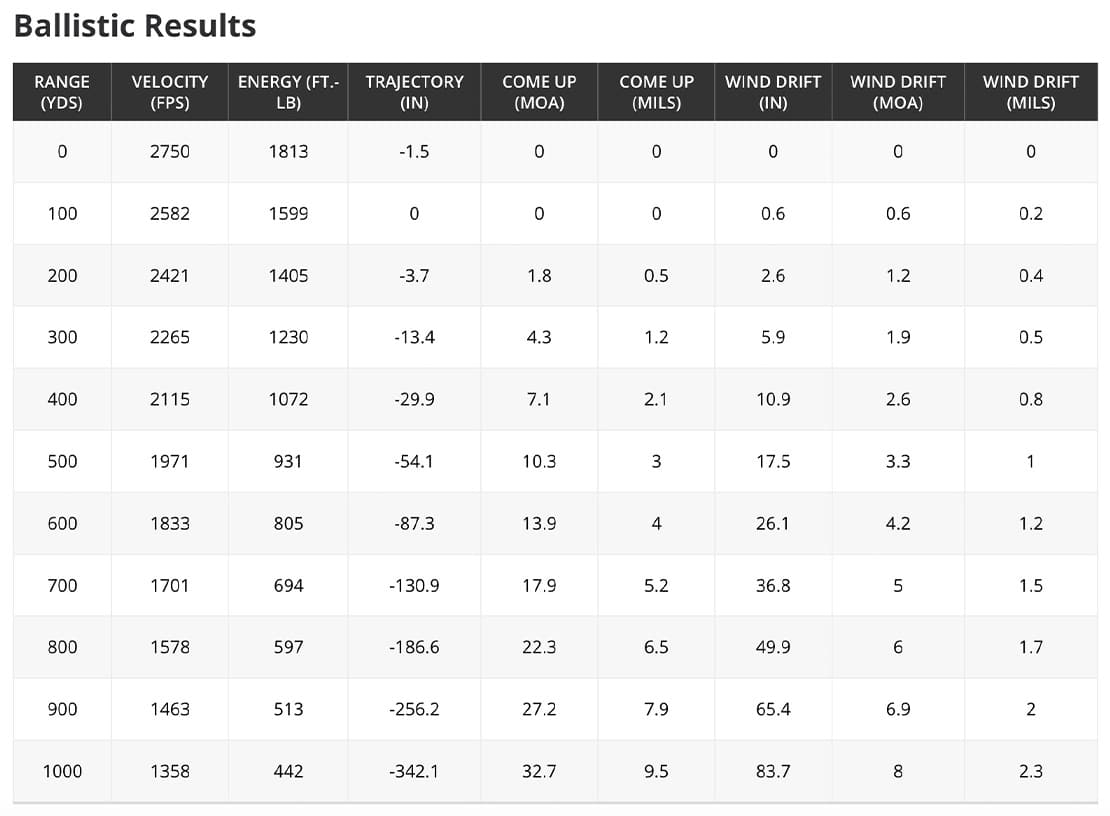
This is important for long-range shooting because once a boat tail bullet drops below the speed of sound, it becomes far more unpredictable.
All of this is a direct result of having an extremely aerodynamic projectile. The aerodynamic efficiency of a bullet is expressed as its ballistic coefficient (BC). The higher the BC number, the more efficient it is.
Two bullets of the same weight but with different diameters will perform differently. For example, a 110-grain .308-diameter bullet doesn’t fly nearly as efficiently as a 110-grain 6mm bullet. The more efficiently it flies, the less it drops and the longer it holds its velocity.
So if the 6mm ARC is so similar to the 6.5 Grendel, why not just stick with the latter? The 6.5 Grendel is a great cartridge, but it’s limited by its overall length when loaded with heavy bullets.
Also, the smaller diameter bullet of the 6mm ARC creates a much higher BC than the 6.5 Grendel when loaded with similar-weight bullets. For example, a 6.5-diameter 100-grain Hornady ELD Match bullet has a BC of 0.385, while the 6mm 103-grain Hornady ELD-X bullet sports a BC of 0.512. That means the 6mm ARC has a much flatter trajectory at longer ranges.
GOOD GEAR – Enjoy a BRCC Brew With the BRCC Classic Logo Stainless-Steel Mug
Other Uses
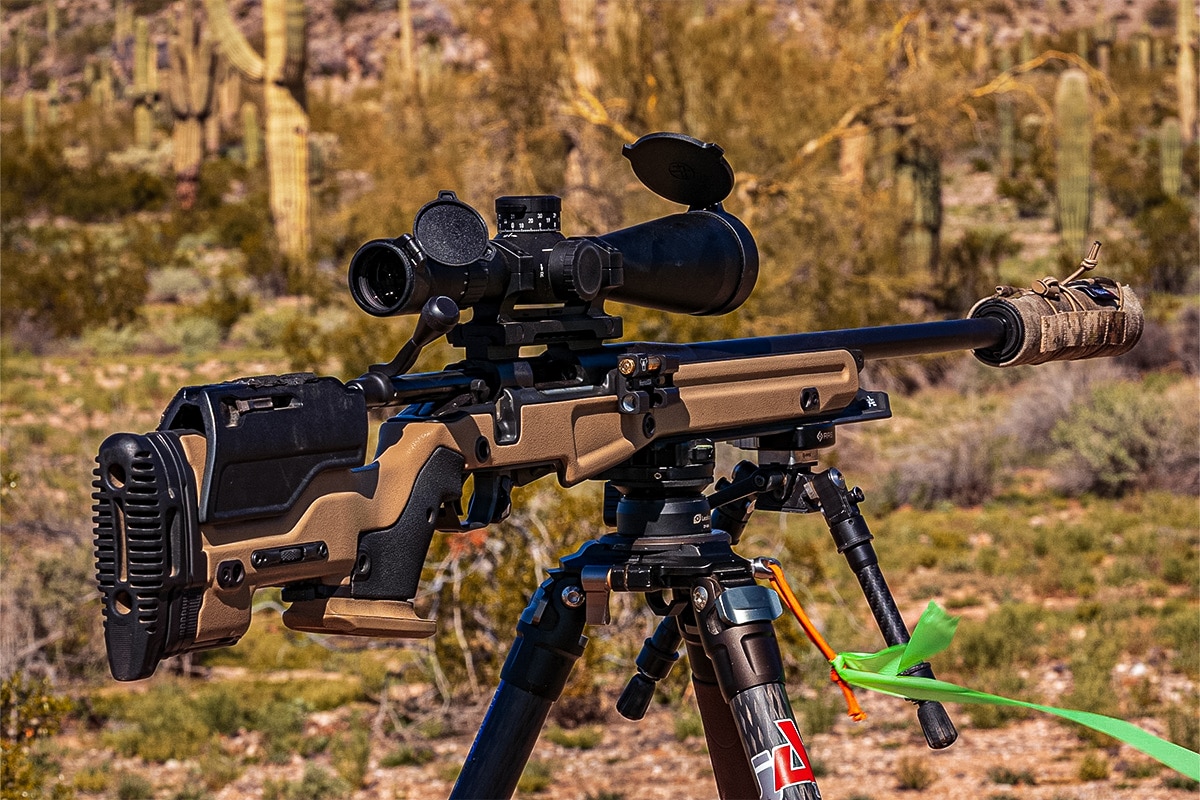
The 6mm ARC is an excellent hunting cartridge for both new and old shooters. With similar ballistics to the .243 Winchester when loaded to its maximum pressures as well as its low recoil, it’s a solid choice for youth hunters. Aside from that, its long-range capabilities make it a nearly perfect pronghorn antelope cartridge. When loaded with lighter and faster bullets, it’s also an excellent varmint round.
When compared to the 6mm Creedmoor, another popular 6mm, the 6mm ARC is about 200 fps slower with the same bullet using factory Hornady ammo. However, the 6mm ARC is also 0.565 inches shorter than the 6mm Creedmoor.
The 6mm ARC is also a prime option for those looking to enter into the Precision Rifle Series or PRS leagues. The great ballistics combined with the low recoil makes it a worthy contender. Additionally, the fact that it is available on store shelves is a huge plus to someone looking to enter.
RELATED – Daniel Defense Suppressors Finally Introduced With 3 Rifle Models
The 6mm ARC in a Bolt Gun
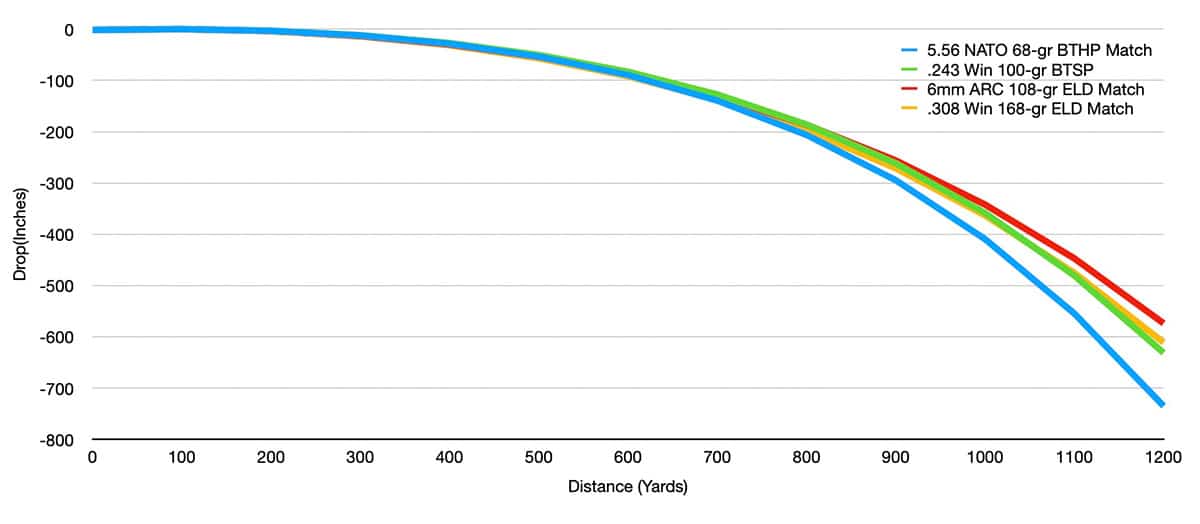
While the 6mm ARC was originally developed for use in an AR-15 platform, even better ballistics and versatility can be achieved when a bolt gun is chambered in the cartridge. Hornady recommends that the reloader not exceed 52,000 psi of chamber pressure in gas guns. This increases the bolt’s longevity but limits the cartridge’s true potential.
You can go up to 62,000 psi in a bolt gun and get 300 fps more out of the round, according to the 11th Edition of Hornady’s Handbook of Cartridge Reloading. When loaded with a 100-grain bullet, the cartridge’s performance nears the classic .243 Winchester. At 2,900 fps, it is only 100 fps slower when loaded with a 100-grain bullet out of a 24-inch barrel.
The other major advantage of the 6mm ARC in a bolt rifle is the cartridge’s overall length or COL. At 2.260 inches long, it is almost a half-inch shorter than the .243 Winchester. This cartridge length makes it a perfect fit for those “micro” or “mini” sized bolt actions, saving weight and creating a long-range capable compact rifle.
The full capabilities of the 6mm ARC won’t be achieved in a bolt gun using factory ammo. The three product offerings that Hornady currently has are tailored for the more popular AR platforms. This means that they are loaded to lower pressures, thus lower velocities. The hand loader will be able to get the most out of this cartridge and push it to its limits.
GOOD GEAR – For All the Night Riders Out There Try BRCC’s Darkest Coffee Yet: Murdered Out
Is the 6mm ARC Here to Stay?

At the moment, Hornady is the only company producing factory 6mm ARC ammo, which is because of the timing of the rounds’ release. It was off to a slow start being released during the COVID-19 pandemic and the corresponding ammo shortage/price spike. Ammunition manufacturers couldn’t keep up with the demand of what they already had in production, and adding a new cartridge was not a high priority — they were concentrating on churning out the most popular cartridges, like 9mm and .223, while new and niche cartridges fell by the wayside.
Most people aren’t looking to get into a new cartridge during a time when any ammo is hard to come by. When the round was released, it was immediately hard to find. That is slowly changing as ammo shelves are gradually being filled with a greater variety of selections.
Component availability plays a significant part in whether a new cartridge is successful or not. Brass for 6.5 Grendel has been on the market for nearly 20 years, and 6mm ARC brass can be easily made out of this brass. The high BC 6mm/.243 bullets are only getting better and better with the popularity of 6mm rounds, like the 6mm Dasher, in PRS. Therefore, the bullet choices for the 6mm ARC will continue to grow.
So is it here to stay? I think so. It is hard to find a negative about this cartridge. However, the 6mm ARC does show a fascinating evolution of what is becoming today’s new caliber. Instead of releasing a new cartridge that has 50-100 fps more velocity than an existing one, they are being designed around optimizing a rifle platform, barrel length, or bullet weight. The 6mm ARC is a perfect example and will continue to be a trendsetter.
READ NEXT – 454 Casull: A Legendary Handgun Hunting Cartridge



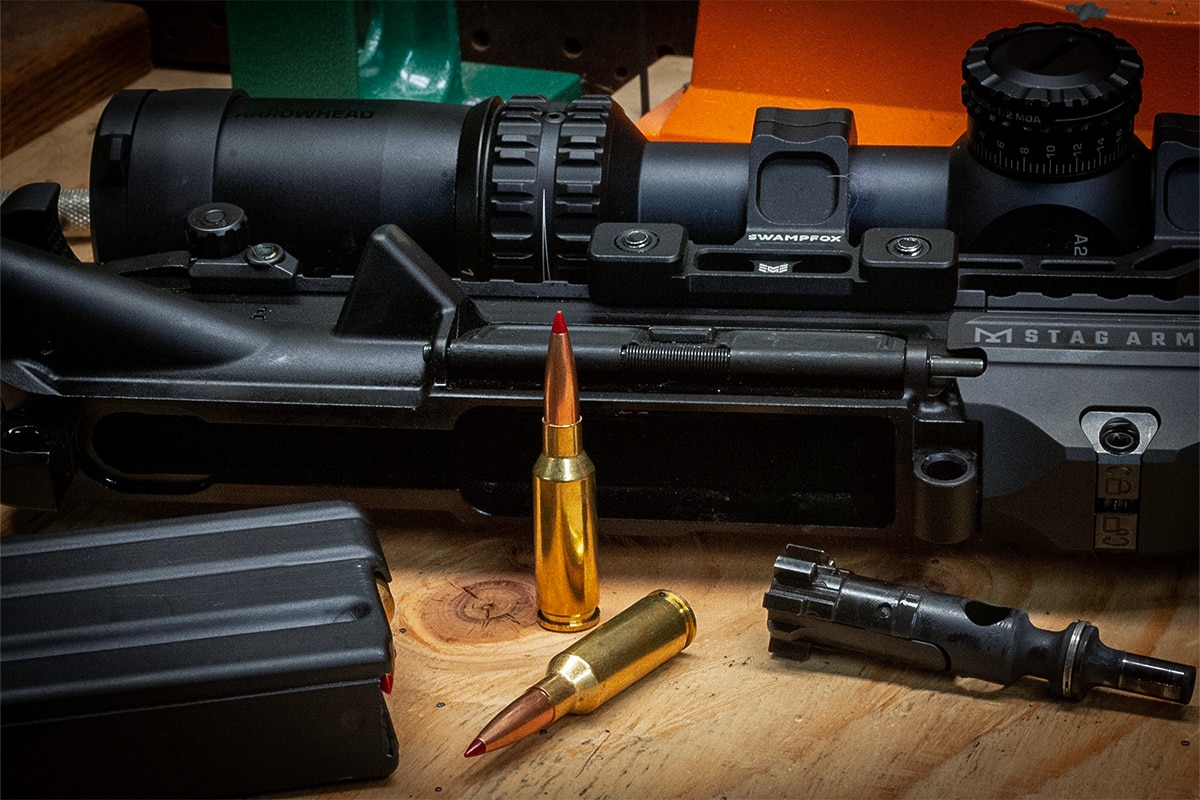

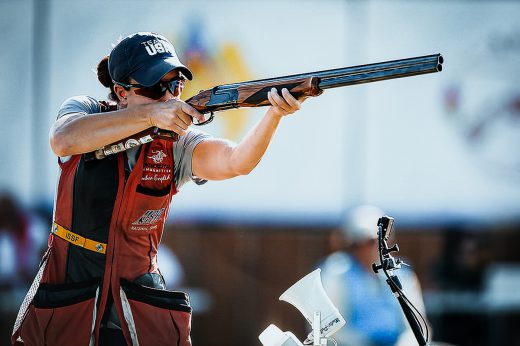
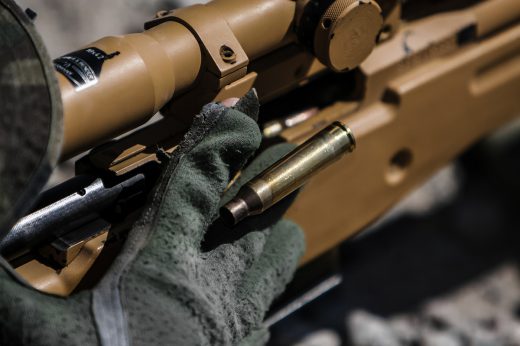
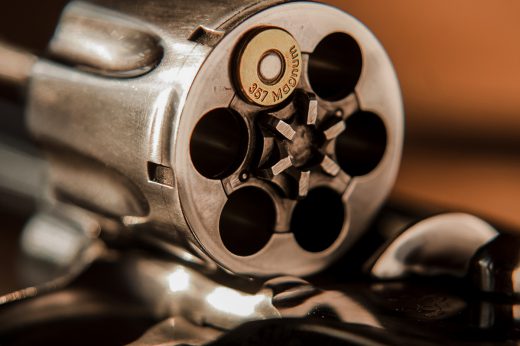


Comments